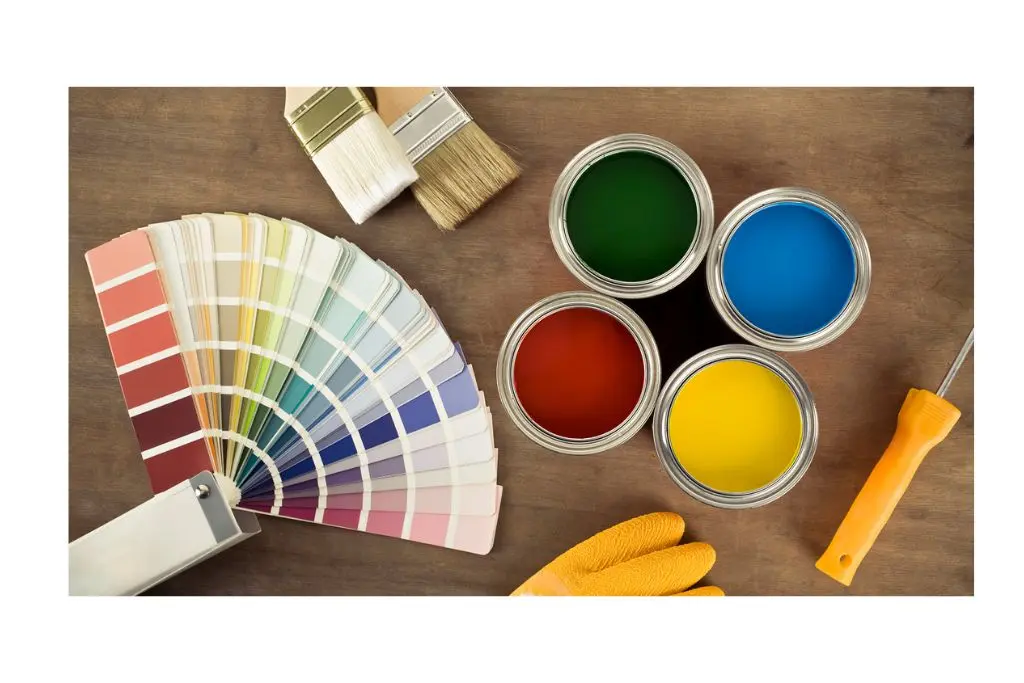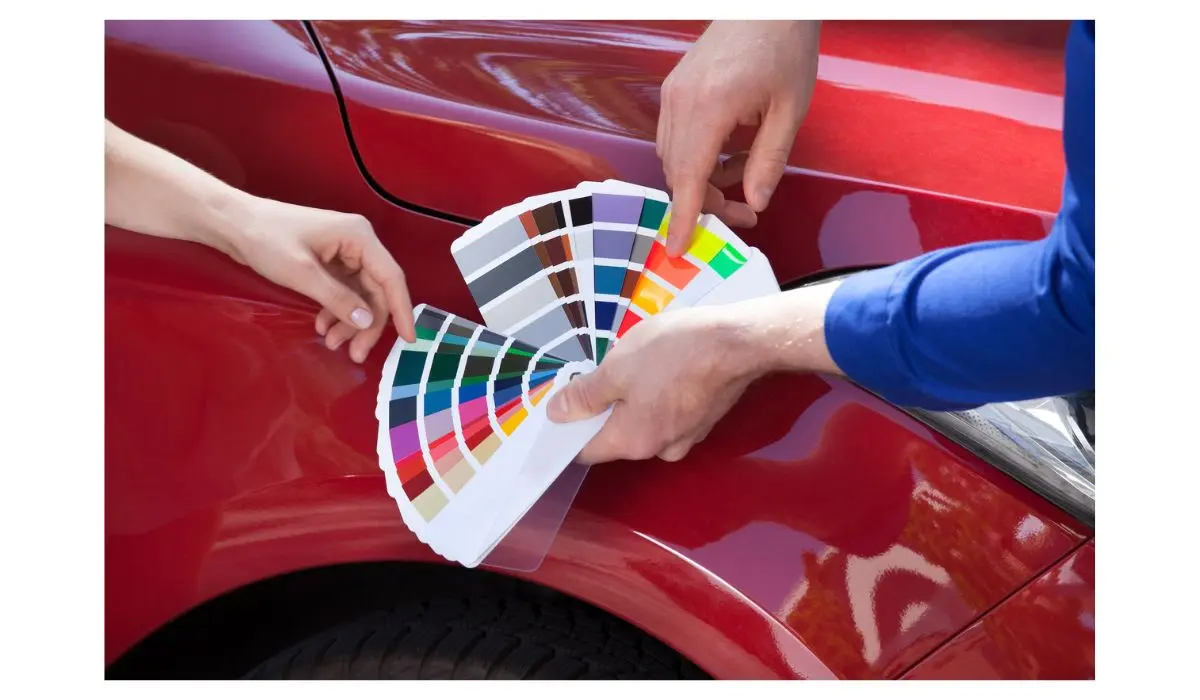To paint a car, you typically need 2 to 4 quarts of paint. This amount varies based on the car’s size.

Painting a car requires careful planning and preparation. Factors like car size, paint type, and the number of coats influence the amount of paint needed. Small cars might need around 2 quarts, while larger vehicles could require up to 4 quarts.
It’s essential to choose the right type of paint, such as acrylic, enamel, or urethane, based on your preferences and the car’s condition. Proper surface preparation ensures the paint adheres well and provides a smooth finish. Investing in quality paint and following the right techniques can make your car look brand new. Always consider consulting professionals for the best results.
Factors Affecting Paint Quantity
Painting a car can seem like a big task. It’s crucial to know how much paint you need. Several factors affect the quantity of paint required. Understanding these factors can help you plan better and avoid wastage.
Car Size And Type
The size and type of your car play a big role in determining paint quantity. Larger cars need more paint than smaller ones. A sedan will need less paint than an SUV or a truck.
Here are some average paint quantities for different car types:
- Small Cars (e.g., Hatchbacks): 2-3 quarts
- Medium Cars (e.g., Sedans): 3-4 quarts
- Large Cars (e.g., SUVs, Trucks): 4-5 quarts
Different types of cars also have different surface areas. This affects how much paint you need. For example, a car with a lot of curves and details may need more paint. This is because it has more surface area to cover.
Number Of Coats Required
The number of coats you apply affects how much paint you’ll need. Most cars need at least two coats. This ensures even coverage and a smooth finish.
Here are some general guidelines:
- Single Coat: Not recommended for cars. It can look uneven and wear out quickly.
- Two Coats: The standard for most paint jobs. Provides good coverage and durability.
- Three Coats: Offers the best finish. Ideal for show cars or high-quality paint jobs.
Each coat requires a specific amount of paint. Multiply the paint needed for one coat by the number of coats you plan to apply. This will give you the total amount of paint required.
For example, if one coat needs 2 quarts and you plan to apply three coats, you’ll need 6 quarts of paint. Always buy a little extra to account for mistakes or touch-ups.
Calculating Paint Quantity
Painting a car can be exciting. But, you need to know how much paint to use. Calculating paint quantity is crucial for a smooth process. It saves time and money. Let’s explore how to calculate the amount of paint needed.
Surface Area Calculation
First, measure the surface area of the car. This helps in knowing how much paint you need. Follow these steps to measure the car’s surface area:
- Measure the length of the car.
- Measure the width of the car.
- Measure the height of the car.
Use these measurements to calculate the total surface area. Here’s a simple formula:
Total Surface Area = 2 (Length Width + Length Height + Width Height)
For example, if your car’s length is 15 feet, width is 6 feet, and height is 5 feet, the calculation will be:
- Total Surface Area = 2 (15 6 + 15 5 + 6 5)
- Total Surface Area = 2 (90 + 75 + 30)
- Total Surface Area = 2 195
- Total Surface Area = 390 square feet
This is your car’s surface area. You can now move to the next step.
Coverage Of Paint Per Gallon
Next, understand the coverage of paint per gallon. Different paints have different coverage rates. Typically, one gallon covers about 350 square feet. Here’s a simple table to help you:
| Paint Type | Coverage per Gallon (sq. ft.) |
| Basic Paint | 350 |
| Premium Paint | 400 |
| High-Quality Paint | 450 |
For example, if your car’s surface area is 390 square feet and you use basic paint, you need:
- Total Paint Needed = Total Surface Area / Coverage per Gallon
- Total Paint Needed = 390 / 350
- Total Paint Needed ≈ 1.11 gallons
So, you will need a little over one gallon. Always buy extra paint for touch-ups. This ensures you have enough paint to complete the job. Happy painting!
Estimating Paint Quantity
Painting a car can be a daunting task, especially when figuring out how much paint is needed. Estimating the right amount is crucial to avoid running out of paint or wasting money on excess. This guide will help you understand the factors influencing paint quantity and provide insights into average usage for different types of cars.
Average Paint Usage For Different Cars
The amount of paint required varies depending on the type and size of the car. Smaller cars need less paint, while larger vehicles, like trucks and SUVs, require more. Here are some general estimates:
- Small cars (e.g., Honda Civic): Approximately 2-3 quarts of paint
- Midsize cars (e.g., Toyota Camry): Approximately 3-4 quarts of paint
- Large cars and SUVs (e.g., Ford Explorer): Approximately 4-6 quarts of paint
These estimates are for a basic paint job and may vary based on the paint type and color. Metallic and pearlescent paints often require additional coats, increasing the amount needed.
Below is a table summarizing the average paint usage:
| Car Type | Average Paint Usage |
| Small Cars | 2-3 quarts |
| Midsize Cars | 3-4 quarts |
| Large Cars and SUVs | 4-6 quarts |
Adjusting For Individual Requirements
Several factors can affect the amount of paint needed for your car. These include the car’s condition, the paint quality, and the number of coats required.
For older cars with rust or damage, more paint might be necessary to cover imperfections. High-quality paints often have better coverage, meaning you might need less paint overall.
Personal preferences also play a role. Some people prefer a thicker finish, requiring additional coats. Here are some tips to adjust paint quantity for individual needs:
- Inspect the car for damage or rust. Repair any issues before painting.
- Choose high-quality paint for better coverage and longevity.
- Decide on the number of coats. More coats mean more paint.
- Consider a primer. Using a primer can reduce the amount of paint needed.
By considering these factors, you can better estimate the amount of paint required for your specific project. Always buy a little extra to account for mistakes or touch-ups.

Tips For Efficient Paint Usage
Painting a car can be a fun project. But knowing how much paint you need is key. This guide will help you use paint efficiently and avoid wastage. Read on to learn some valuable tips for efficient paint usage.
Proper Surface Preparation
Good preparation of the car surface is crucial. Clean the car thoroughly to remove dirt and grime. Use soap and water for the best results. Then, sand the surface to make it smooth. Sanding helps the paint stick better.
Next, use a primer. The primer helps the paint adhere. It also makes the paint last longer. Apply the primer evenly. Let it dry completely before painting. Here are some steps to follow:
- Wash the car with soap and water.
- Dry the car with a clean towel.
- Sand the surface to remove old paint.
- Apply a coat of primer.
- Let the primer dry fully.
Proper surface preparation ensures the paint goes on smoothly. It also reduces the amount of paint needed. Spending time on preparation saves paint and makes your car look great.
Using The Right Application Technique
Applying the paint correctly is just as important. Use even strokes when painting. This helps to avoid streaks and uneven layers. You should use a spray gun for the best results. Spray guns provide a smooth finish and use paint more efficiently.
Hold the spray gun about 6 inches from the surface. Move the gun in steady, even motions. Do not stay in one spot too long. This can cause drips and uneven paint. Follow these steps for a smooth application:
- Fill the spray gun with the right amount of paint.
- Test the spray on a piece of cardboard.
- Hold the gun 6 inches from the car surface.
- Move the gun in steady, even motions.
- Apply multiple thin coats for the best results.
Multiple thin coats are better than one thick coat. Thin coats dry faster and look smoother. Let each coat dry before adding the next one. This helps the paint last longer.
Using these techniques ensures you use paint efficiently. Proper technique saves paint and money. It also gives your car a professional look.
Our Previous Post:
| How Many Axles Does a Car Have? Unveiling the Mystery! |
| What Does Car Registration Look Like?: Unveiling Essentials |
| What Happens to a Car When Someone Dies Without a Will |
Frequently Asked Questions On How Much Paint to Paint a Car
How Much Paint Needed For Car?
Typically, you need 2-3 quarts for a small car and 3-4 quarts for a larger vehicle.
What Type Of Paint is Best For Cars?
Acrylic urethane is often recommended for its durability and ease of application in cars.
How Many Coats Of Paint For Car?
Usually, 2-3 coats of paint are sufficient for an even, professional finish on a car.
How To Prepare Car For Painting?
Clean the surface, sand it down, and apply a primer before painting to ensure the best results.
Conclusion
Determining the right amount of paint for your car can save time and money. By considering the car size and type of paint, you can achieve a flawless finish. Proper preparation and application techniques are also crucial. Follow these tips to ensure your car looks professionally painted and vibrant.
Last Updated on June 22, 2024 by Brian Beasley

